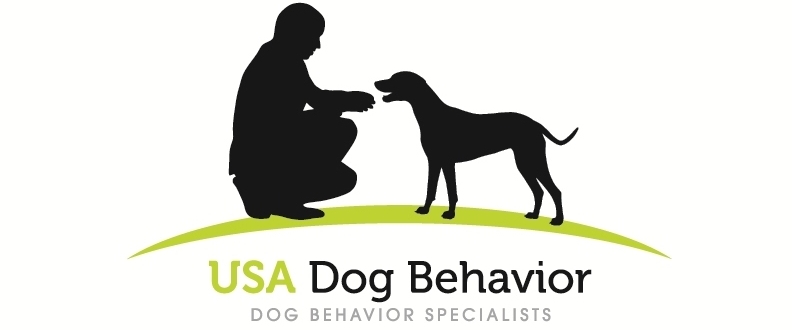Can You Tell Your Aggressive or Fearful Dog That Someone Is Safe? Unpacking the Truth
Can You Tell Your Aggressive or Fearful Dog That Someone Is Safe? Unpacking the Truth
© Scott Sheaffer, CBCC-KA, CDBC, CPDT-KA, USA Dog Behavior, LLC
“Just about 100% of dog owners aren’t trying to do the wrong thing with their dogs.”
My wife, Barbara, and I were at a local Bass Pro shop in the Dallas, Texas area recently. I was there looking for some new hiking boots. Did you know that hiking boots are excellent for working with dogs? I should write an article about why that’s true. However, I’m not writing about hiking boots today. I’m writing about dog owners who feel they are able to communicate to their dog that they don’t need to be afraid or aggressive toward specific people. I happened to run into one of these dog owners at our Bass Pro visit.
I was sitting on one of those uncomfortable benches in the shoe department trying on a couple pairs of boots when a 45ish kinda scruffy-looking man walked his medium-sized mutt within a couple of feet. The dog had raised hackles and immediately began to pull toward me and bark. You don’t need to be a dog behaviorist to know that this doggie was unhappy being near me. Don’t worry, I’ve learned not to take these things personally.
My first reaction, and I think it’s the same reaction that most anyone would have, was to question why anyone would bring a dog like this into a retail store like Bass Pro. I then began to formulate how I needed to handle things because, quite frankly, my first priority was to not get bitten. I’ve really developed a distaste for getting bitten by aggressive dogs.
Just as I was starting to address the situation, the scruffy-looking man said to his dog, “Tank, this guy is okay. You’re okay, Tank, no need to worry.” He then looked directly at me and said, “Tank won’t bother you now, he’s just very protective. You’re safe.” Pretty much everything this dog owner was saying and feeling was essentially - inaccurate.
Before I write further about this incident, I want to say something that I’ve found to be consistently true. Just about 100% of dog owners aren’t trying to do the wrong thing with their dogs. They just sometimes don’t understand the dynamics of what their dog is thinking and their behavior - and the possible risks.
Let me quickly break down what was actually going on with this man’s dog.
This dog’s behavior was a result of his fear. He was probably already uncomfortable in the crowded Bass Pro environment and got even more nervous as he was forced to be near me. This adding of triggers is called trigger stacking. This dog should not be in these environments.
Dogs don’t understand human language. Sure, they understand some commands or cues you’ve taught them. But beyond that, not much. This owner’s words were actually probably making things worse because the dog has come to associate them with scary situations. This kind of behavioral cueing (as it is called) reminds me of the quote from Shakespeare’s Hamlet, “The [human] doth protest too much, methinks.”
Once this dog felt he was “too close for comfort” to me, he resorted to aggression (e.g., moving aggressively toward me as an offensive-is-the-best-defense strategy, barking, etc.). He was actually trying to get me to move away from him.
This dog was definitely protecting something - himself. This is one of the most pervasive myths I see in the dog behavior world. Even some dog trainers, veterinarians, and animal rescue workers repeat this sentiment sometimes. It may look like the dog is protecting the owner, but they aren’t.
I was definitely not safe around this dog. This owner was playing Russian Roulette with his dog and didn’t know it. Dogs that are fearful like this will sometimes have no bite history with humans. No bite history - yet.
How did I handle the situation in that moment? First, it’s always super important to remain calm and not behaviorally cue (mentioned earlier) the dog any further. I completely ignored the dog (i.e., didn’t look, touch, talk, or approach) in order to not alarm the dog any further. I suggested to the man that he move the dog further away from me. That did the trick. What was only a few seconds, felt a lot longer. This gentleman was parading his dog through a crowded retail store and didn’t fully understand the risk he was putting himself and the dog in.
If you find yourself in a situation like I was in, remember to: stay calm, completely ignore the dog, and create distance between you and the dog by whatever means available.
If you have a dog like this, keep them away from people they are uncomfortable with (especially in crowded areas like retail stores), recognize that this is a fear-based behavior and there is no “protecting” going on, and get professional help from a dog trainer or dog behaviorist who can guide you through management of the aggression and necessary behavior exercises.
I ended up buying a pair of hiking boots at Bass Pro that day. I’m going to name them Tank.



